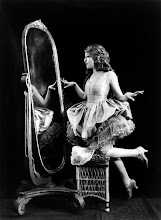 Before Andrew Lloyd Webber got his annoying musical hands all over this classic story and turned it into what is really a cheesy lovefest, if you take a hard enough look at it, The Phantom of the Opera was not considered a romance. In fact, the original novel by Gaston Leroux was more in the mystery/horror genre than to be considered a romance. And to be fair, how romantic is a crazily jealous, megalomanical guy who kills and kidnaps people to prove his love? Anyway, the best film adaptation of The Phantom, in my completely biased opinion, was the 1925 verison with the Man of A Thousand Faces himself, the venerable Lon Chaney.
Before Andrew Lloyd Webber got his annoying musical hands all over this classic story and turned it into what is really a cheesy lovefest, if you take a hard enough look at it, The Phantom of the Opera was not considered a romance. In fact, the original novel by Gaston Leroux was more in the mystery/horror genre than to be considered a romance. And to be fair, how romantic is a crazily jealous, megalomanical guy who kills and kidnaps people to prove his love? Anyway, the best film adaptation of The Phantom, in my completely biased opinion, was the 1925 verison with the Man of A Thousand Faces himself, the venerable Lon Chaney. The master of makeup in the early days of film, Chaney was famous for his silent film roles as the freaks, geeks, and frightful characters, such as Quasimodo in The Hunchback of Notre Dame. Chaney made the unmasking scene in The Phantom and no unmasking scene will ever be as grotesque as the horrifying one in the 1925 silent film. The silent film is true to form and portrays the storyline closer to that of a novel, not a total romance with song and dance but rather a terrifying mystery taking place at the old opera house. Directed by the ill-fated Rupert Julian, and staring, alongside Chaney, Mary Philbin as Christine Daae and Norman Kerry as the Vicomte Raoul de Chagy, the silent verison still manages to leap off the screen.
The master of makeup in the early days of film, Chaney was famous for his silent film roles as the freaks, geeks, and frightful characters, such as Quasimodo in The Hunchback of Notre Dame. Chaney made the unmasking scene in The Phantom and no unmasking scene will ever be as grotesque as the horrifying one in the 1925 silent film. The silent film is true to form and portrays the storyline closer to that of a novel, not a total romance with song and dance but rather a terrifying mystery taking place at the old opera house. Directed by the ill-fated Rupert Julian, and staring, alongside Chaney, Mary Philbin as Christine Daae and Norman Kerry as the Vicomte Raoul de Chagy, the silent verison still manages to leap off the screen.Like as Nosferatu, which I blogged about before, this film is also available in its entirety on Goggle Video. So, even if you don't have it home, you can just click away on your computer a few times and watch Chaney in all of his horror and glory. I will spare giving you the plot, since I'm sure you know it already. The silence does not ruin the film at all, in fact adding to the suspense of the scenes. The costumes and scenery are absolutely gorgeous, capturing the opulence and glory of the grand days of the opera. Because the film is entirely silent in some versions or only with music in the background in others, what some might consider overacting actually helps you understand what is taking place in the plot, along with the title cards. For the time period, the
 special effects are marvelous as well. Studios now spend millions of dollars on special effects to create the same emotions than these simple lighting and shadow effects, which help to make Phantom's eerie persona.
special effects are marvelous as well. Studios now spend millions of dollars on special effects to create the same emotions than these simple lighting and shadow effects, which help to make Phantom's eerie persona.The film was redubbed in 1929 after the advent of sound. Chaney's voice was not used because it was not available and so the entire film was rescored and dubbed over using third party actors. Personally, I prefer the verison that is eternally silent, title cards and all. The little organ music in the background of the silent film on DVD or video makes the movie enough as it is. If you want to know more about Chaney, you can go to his official site or to PBS which has a great article and some resources about The Man of A Thousand Faces. If you want a good silent horror film with a little romance on the side for a movie night, I highly recommend watching Lon Chaney in The Phantom of the Opera. This masterfully done film shows how early film is just as good, if not better, than more modern verisons.






No comments:
Post a Comment